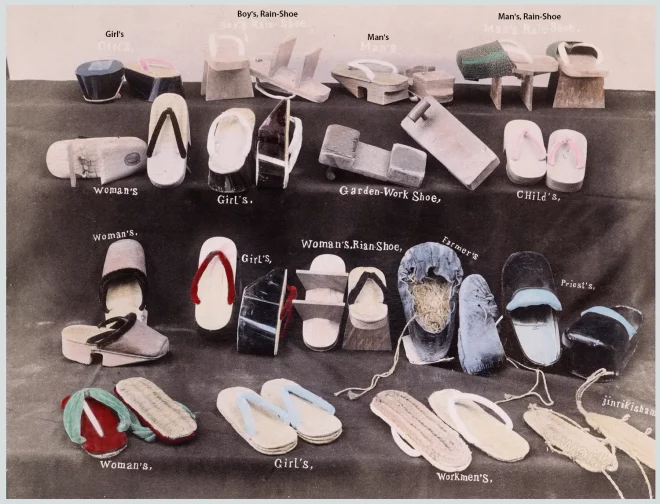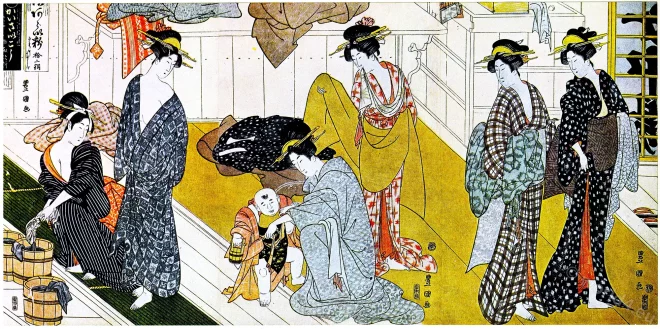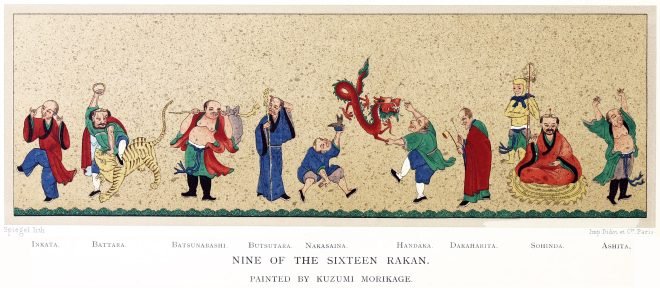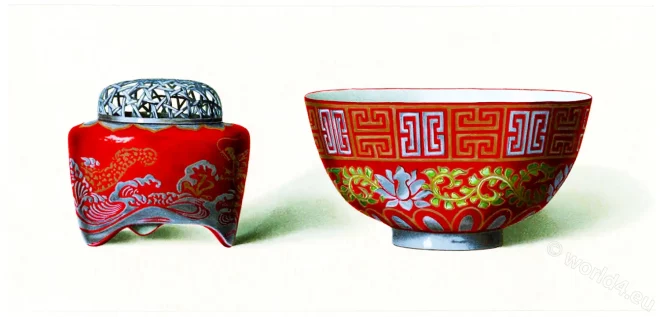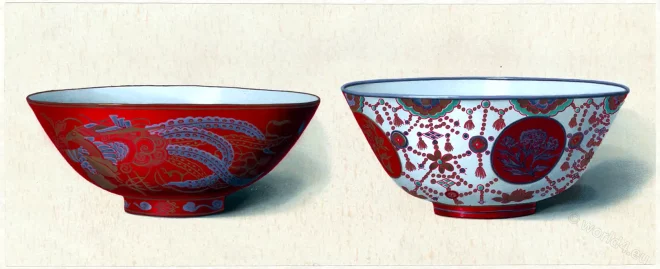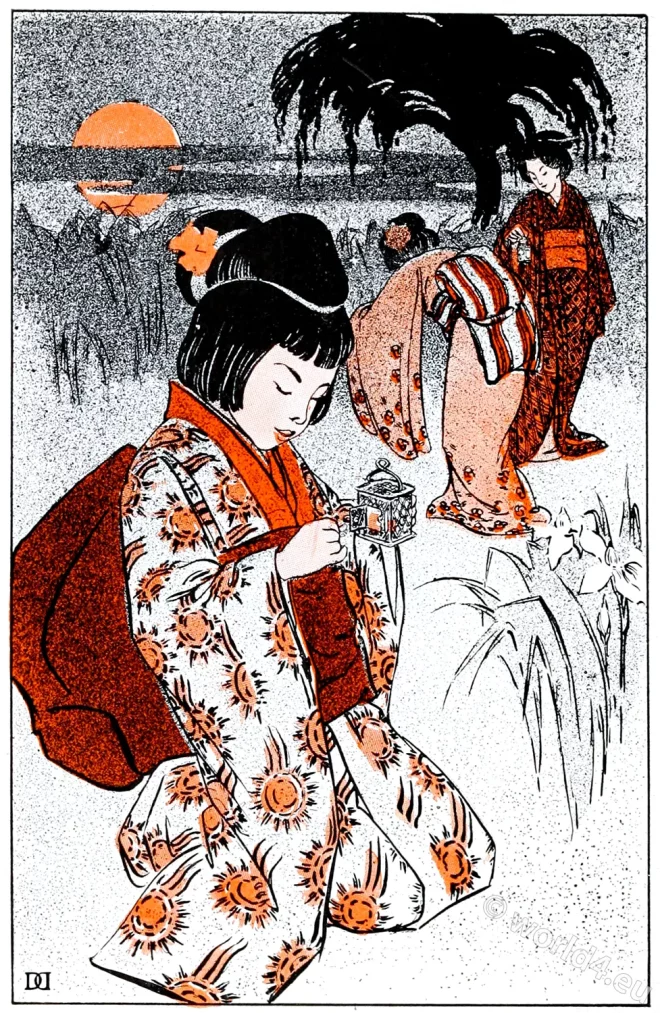The variety of Japanese shoe shapes and designs is mainly tailored to the weather conditions and the wearer’s profession.
Category: Asia
Costume and fashion history of Asia. Manners and Customs. Collected from rare sources.
Utagawa Toyokuni. Master of the Ukiyo-e style.
A brilliant artist of high repute in his day. Some of his prints, especially the earlier ones, are of distinguished quality.
Kaga ceramics. Vases and bottle. Japan.
Vases and bottle made from Kaga ceramics.
A bowl (hachi), Ko-kutani, Kaga Japan
Work of Tamora Gonzayemon. Painted by Kuzumi Moriage. Nine of the sixteen Rakan. 17th century.
Hitzen: Arita ceramic. Old Japan wares.
Pair of Temple lamps (toro), of porcelain. Bowl (hachi), of porcelain. Made for native users.
Japanese Ko Kutani ceramic. Incense burner, Rice bowl.
Incense burner (Koro), Rice bowl (Meshi-Wan) of Ko Kutani Porcelain, about 1730.
Two Japanese Kutani rice bowls, Japan.
Ko Kutani rice bowls. Period, 1700-1750.
The Fire-Fly’s Lovers. Fairy tale of old Japan
The fairy tale of Princess Hotaru-himé.
The “floating” Torii gate at Miyajima, Japan
The “floating” Torii gate at Miyajima or Itskushima (“Island of Light”)
The Ike-no-Niwa of the Imperial Palace at Kioto.
The Ike-no-Niwa, or “Garden of the Lake,” in the grounds of the Imperial Palace at Kioto

